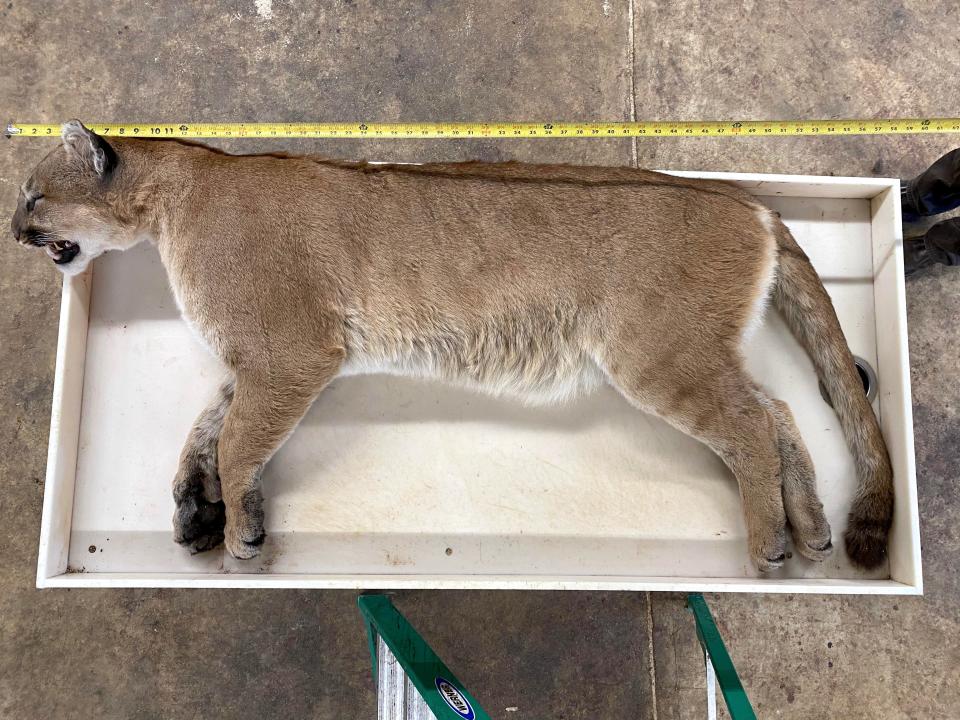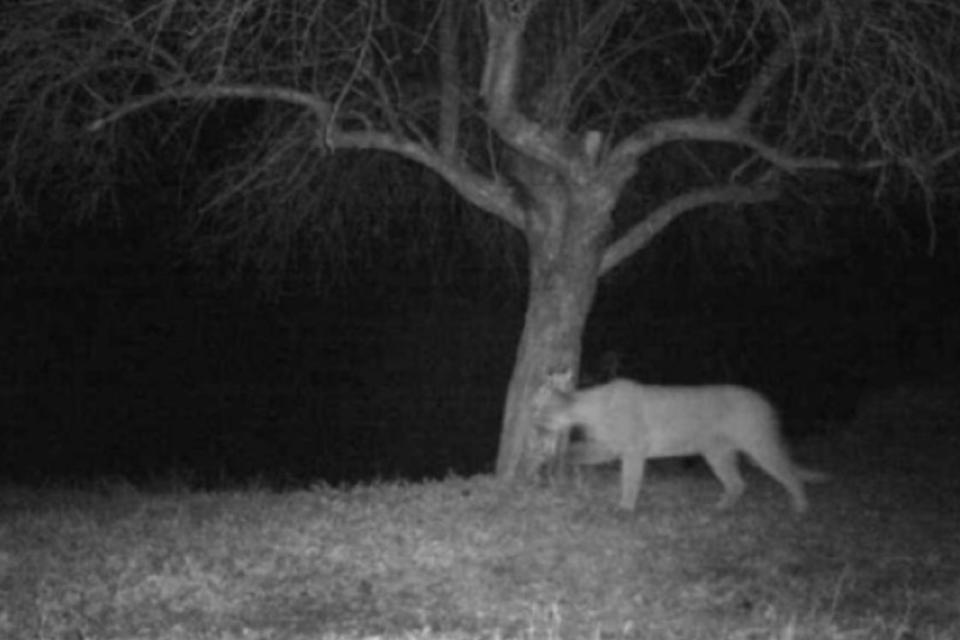Exam shows cougar killed in Wisconsin was healthy; bowhunter feared animal would attack

The cougar killed last month by a bowhunter in Buffalo County was in good condition and not suffering from injury or disease, according to a necropsy conducted Thursday by the Department of Natural Resources.
The animal had good fat reserves and had recently eaten a meal of white-tailed deer, said Lindsey Long, DNR veterinarian.
Long was part of a team of agency employees, including large carnivore specialist Randy Johnson and furbearer ecologist Shawn Rossler, that performed the examination at the DNR's Fur Research Training Center in Madison.
The work was conducted to gain additional information on the first cougar killed in Wisconsin since 1908, according to the DNR.
The animal was shot Nov. 11 by Ben Karasch, 39, of Eau Claire as he hunted from a tree stand near Alma. Karasch told DNR conservation wardens he feared the animal would attack him and his only option was to shoot.
After reviewing information collected by DNR conservation wardens, the Buffalo County district attorney decided no citation was warranted. Cougars are a protected species in Wisconsin but humans can use lethal force to protect personal safety.
In his report to DNR conservation wardens, Karasch said at 3:45 p.m. he noticed movement about 40 yards away that he first thought was a deer.
But he soon saw the animal's face, large body and long tail and realized it was a cougar.
Cougars were native to Wisconsin but extirpated in the early 1900s. Although the species has yet to restore a breeding population in the state, cougar sightings are no longer rare as individual animals disperse from strongholds in the western U.S. Most sightings are recorded on trail cameras.
The DNR documented 25 cougar sightings in Wisconsin in 2023 as of early November. One had been recorded in Buffalo County on Nov. 8, likely the same animal killed three days later.

Karasch said he thinks the cougar was initially attracted by a deer decoy he was using. But when he moved in his tree stand, the cougar focused its attention on him.
The cougar began to sneak in his direction while maintaining constant eye contact, Karasch told the wardens.
But although he made noise, waved his hands and yelled at the cougar it kept coming.
When the cougar had closed within 20 yards, he decided the animal was intent on attacking him and his only option was to shoot.
Karasch drew his compound bow and released the arrow, striking the cougar in the shoulder. After the animal ran off he climbed down and called the DNR to report the incident.
An investigation the following morning by DNR wardens found the cougar dead about 120 yards from Karasch's hunting location. The wardens determined the cougar was 13 yards from Karasch when he shot it.
The animal's carcass was retained by the DNR for examination.
Among the necropsy findings: the cougar was a male, estimated at 2 years old, with a weight of 128 pounds and a nose-to-tail length of 6 feet, 9 inches. Its front legs were 29 inches long and its front feet measured 3 1/8 inches by 3 1/4 inches.
Its stomach contained about 2.5 pounds of deer meat, bones and fur, Johnson said. The meal partially filled its stomach and was eaten within the last 24 hours.
The arrow had penetrated the cougar's right shoulder and passed through its lungs before stopping beneath the hide on the opposite side.
Long, the DNR veterinarian, said the cougar was in "very good condition, with good fat stores and no obvious evidence of disease or parasites."
Blood, tooth and tissue samples from the cougar will be analyzed for additional factors, including age and genetics. The hide and skull will be mounted and displayed at a public site in Buffalo County, Johnson said.
And the other bones will be kept as part of a collection at the University of Wisconsin's zoological museum.
"All in all, everything we documented was very normal for a young, dispersing male cougar," said Johnson, who earned a master's degree working on cougars in the western U.S.
The incident stands out, however, as the only cougar-human interaction in modern Wisconsin history that ended with the use of lethal force.
The DNR continues to encourage the public to report all cougar sightings via the DNR’s Wildlife Observation Tool. Additional information on cougars and verified observations is available on the DNR’s Cougars in Wisconsin webpage.
This article originally appeared on Milwaukee Journal Sentinel: Exam update on cougar killed in Wisconsin; bowhunter feared attack

